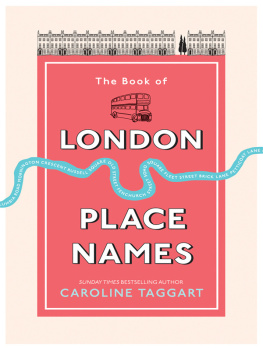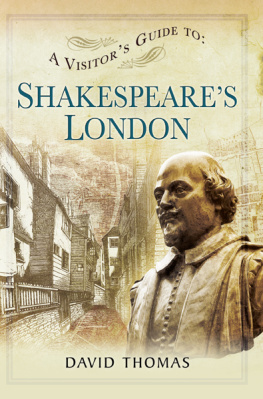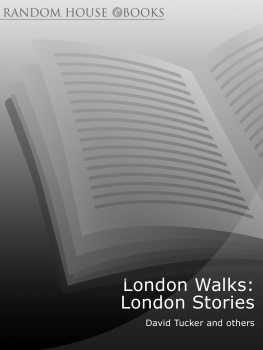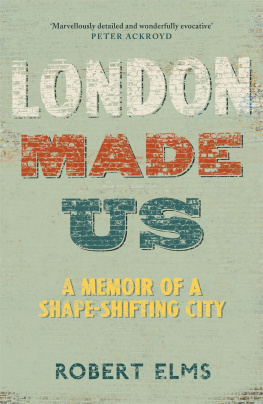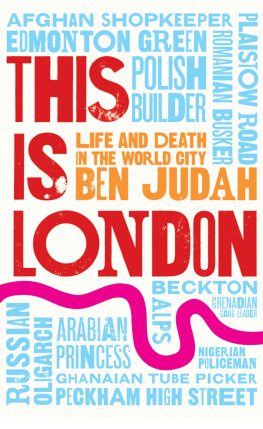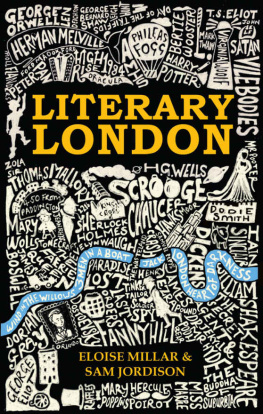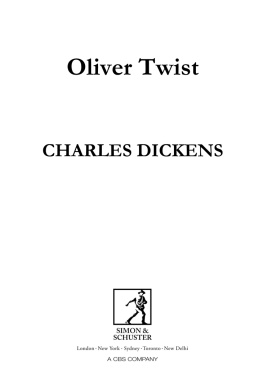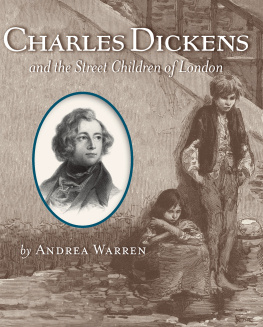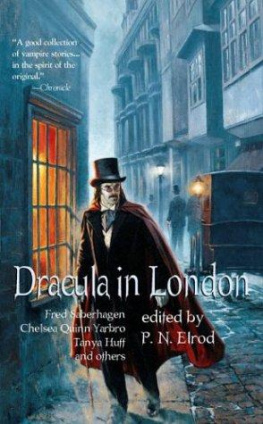Pagebreaks of the print version

THE BOOK LOVERS GUIDE TO
LONDON
THE BOOK LOVERS GUIDE TO
LONDON
SARAH MILNE
First published in Great Britain in 2021 by
White Owl
An imprint of
Pen & Sword Books Ltd
Yorkshire - Philadelphia
Copyright Sarah Milne, 2021
ISBN 9781399001144
eISBN 9781399001151
The right of Sarah Milne to be identified as author of this work has been asserted by her in accordance with the Copyright, Designs and Patents Act 1988.
A CIP catalogue record for this book is available from the British Library.
All rights reserved. No part of this book may be reproduced or transmitted in any form or by any means, electronic or mechanical including photocopying, recording or by any information storage and retrieval system, without permission from the Publisher in writing.
Design: Paul Wilkinson.
Pen & Sword Books Limited incorporates the imprints of Atlas, Archaeology, Aviation, Discovery, Family History, Fiction, History, Maritime, Military, Military Classics, Politics, Select, Transport, True Crime, Air World, Frontline Publishing, Leo Cooper, Remember When, Seaforth Publishing, The Praetorian Press, Wharncliffe Local History, Wharncliffe Transport, Wharncliffe True Crime and White Owl.
For a complete list of Pen & Sword titles please contact
PEN & SWORD BOOKS LIMITED
47 Church Street, Barnsley, South Yorkshire, S70 2AS,
United Kingdom
E-mail:
Website: www.pen-and-sword.co.uk
Or
PEN AND SWORD BOOKS
1950 Lawrence Rd, Havertown, PA 19083, USA
E-mail:
Website: www.penandswordbooks.com
FOREWORD
THE LIVES OF the writers who made their homes in and frequented London are often as compelling as the stories they told. It has been said that Dickens helped to create the London we experience as sure as its actual builders did. Everyone writing about London has an exciting story to share with us about the city through their experiences, helping us to know, understand and love London and all the varied and cosmopolitan people and communities that make it.
Throughout the centuries, Londons writers have lived through the Plague, the Great Fire, been bombed out of their homes in the Blitz, had affairs, been imprisoned for affairs, enjoyed raucous parties, fallen in love with each other, fallen out with each other their lives have been every bit as colourful as their fiction.
This book is a guide to Londons writers, from Geoffrey Chaucer in 1400 up to the present day. It explores how their lives and experiences of the city shaped their writing and how we can see London through their work. There is far more to tell than can fit into this book. Londons most famous writers could fill a book this size all on their own. Not every writer, not every address they have ever lived in can be included, or it would just be a long list. I have concentrated most on biographical snapshots stories that are the most interesting and intriguing, and on bringing fictional books and scenes to life by guiding you right into their heart. I chose to write this book in such a way that it can be carried around and used as a reference and guide whilst in London, but can also be read anywhere in the world to bring the citys literature to life.

I hope this book will bring you a greater love of London and its literature. Maybe it will fire up your imagination and inspire you to write something of your own, bringing to life the London you know.
CENTRAL LONDON
BLOOMSBURY
Isabella Woodhouse, in Jane Austens Emma (1816) declares Bloomsbury to be a part of London, very superior to most others. Set in Londons fashionable West End, Bloomsbury has elegant Georgian residencies, lush garden squares, stylish shops, booksellers, publishers, and all a stones-throw from the British Museum. It is no surprise Bloomsbury has become synonymous with Londons literature.
The British Museum
Since it opened its doors on Great Russell Street in 1759, the British Museum has been a great source of inspiration for Londons writers, with exhibits on themes such as life, death, love and money, spanning two million years and six continents. Percy Bysshe Shelley, the Romantic Poet and husband to novelist Mary, wrote his famous sonnet, Ozymandias during a visit when he discovered the museum had acquired a gigantic statue of Ramesses II. Russell Hobans fantasy classic, The Lion of Boaz-Jachin and Jachin-Boaz (1973) was inspired by a relief of an Assyrian royal lion hunt.
More recently, the novelist Imogen Hermes Gowar wrote The Mermaid and Mrs Hancock (2016), a tale set in the seedy side of London in the 1780s about how the lives of a merchant and a high-class prostitute come together following the arrival of a mermaid in London. The book was born from a writing exercise based around an artefact in the museums collection: Gowar chose a Japanese work comprising of a monkeys body sewn to a fishs tail.

The dying lion from the Kings Hunt Relief from the Palace of Assurbanipal in Ninevah, Assyria, that inspired Hobans work. Flik47/shutterstock.com

The curved bookcases of the British Museum Reading Room. GTS Production/shutterstock.com
The British Museum was home to the British Library until 1973, when it moved to Euston Road. In 1857 it had opened its own reading room; a vast library of books and materials linked to its gallery displays. Nestled inside the museums famous Central Courtyard, this unique dome-covered building, with its array of literature displayed on walls of curved shelving, was a nirvana for writers.
The library was a favourite place for Karl Marx and Lenin to compose their essays. When Charles Dickens acquired a readers ticket on his eighteenth birthday in 183, he set himself the goal of researching the entire history of England and the Complete Works of Shakespeare. Bram Stoker, James Joyce and Arthur Conan Doyle would also visit frequently to research. Sherlock Holmes visits the reading room to consult a book on voodooism in The Adventure of Wisteria Lodge (1917).

The Reading Room is now an exhibition space in the museums Central Courtyard. elesi/shutterstock.com
In Peter Ackroyds intriguing novel, Dan Leno and the Limehouse Golem (1994), a murder-mystery setting real historical characters in a reimagined Victorian London, Karl Marx, George Gissing and the comedian Dan Leno are all working together in the reading room, a place referred to in the book as, the true spiritual centre of London.
Bloomsburys Writers
Percy Bysshe Shelley and his wife-to-be Mary lived at 87 Marchmont Street, then a dilapidated area of Bloomsbury, between 1815 and 1816. It was here where Mary outlined Frankenstein (1818) and gave birth to their son, William. In 1816, Shelleys ex-wife drowned herself in Hyde Parks Serpentine River. Percy and Mary married in an attempt to secure custody of his children.


